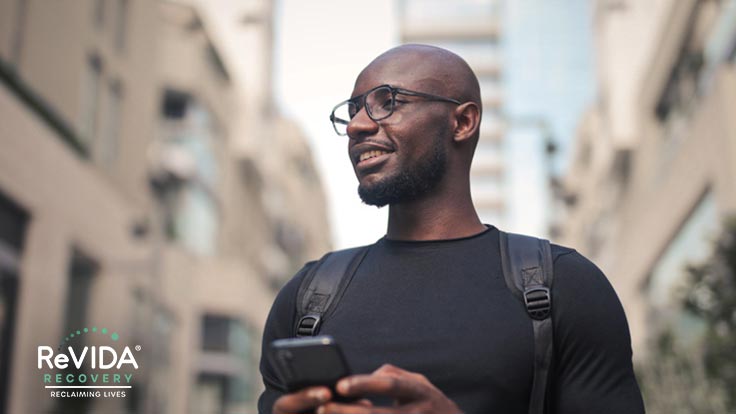
Along with the rise of the nationwide opioid epidemic, we have also seen the rise of specific kinds of opioids. One opioid that has proven to be the most dangerous, and specifically the most deadly, is fentanyl.
Fentanyl is fairly cheap to make and distribute. So one of the reasons it has become so dangerous is because the people who make and sell illegal drugs often “cut” or “lace” (dilute) drugs with fentanyl to make the drugs they are selling stronger or to cheaply substitute for another product. It is difficult to identify fentanyl mixed in, creating a vary dangerous situation.
Fentanyl is also extremely potent, so it does not take much of the drug to create a euphoric (pleasurable) effect. On the other hand, it does not take very much for the drug to become deadly.
Many people take lethal doses of fentanyl without even knowing they are taking it. Tennessee is no exception when it comes to this nationwide epidemic. The Tennessee Department of Health found that in 2020, more than 3,000 people in the state died of a drug overdose. They estimated that for every six of those overdose deaths, four of them involved fentanyl.
Fentanyl is an extremely dangerous drug that is easy to overdose on, but if you or a loved one is living with addiction, it is important to remember that you are not alone. There is hope, and ReVIDA Recovery® can help you overcome fentanyl use disorder.
Table of Contents
What Is Fentanyl?
Fentanyl is a synthetic (man-made) opioid that has been used in the U.S. since the 1960s. Fentanyl is sometimes used to treat moderate to severe pain after surgery. Fentanyl is also one of the few opioids that are used as a long-term treatment for chronic pain management.
Fentanyl is an extremely strong drug. The Drug Enforcement Administration (DEA) has found that it is as much as 80 to 100 times stronger than morphine. That potency has led to it becoming popular as a recreational street drug.
The most dangerous thing about fentanyl is that it is often sold under the guise of being a different drug, which leads to people overdosing. Because fentanyl is often also cut into other drugs to make them more potent, it often leads to people consuming fentanyl without knowing what they are actually taking.
What Are the Risks of Fentanyl?
There are a few major risks when it comes to fentanyl. As was mentioned above, the DEA has found fentanyl to be as much as 100 times more potent than morphine. It may even be 50 times stronger than heroin, according to the Centers for Disease Control and Prevention (CDC). With a drug this potent, it takes relatively small amounts to overdose.
When used medically, fentanyl typically is used in the form of a patch that allows the user to get very small doses over the course of several days in order to manage chronic pain. However, people who use fentanyl recreationally take larger doses to achieve euphoric effects. This high dosage can lead to a greater chance of overdose.
Fentanyl is also cheap to produce and highly addictive. Because of this, many people who sell illicit drugs mix fentanyl into other products to make them more addictive in many cases, which often results in returning customers and allows the dealers to easily make money.
According to the CDC, many fentanyl overdoses occur in people who are not even aware that the drugs they are taking have fentanyl in them. Fentanyl has no obvious look, smell, or taste when it is mixed with other drugs. The only way to know if an illicitly purchased drug has fentanyl in it is to do a chemical test.
The fact that fentanyl is so hard to detect makes it extremely dangerous, especially for young people who may be buying illicit drugs for the first time. They may not be familiar with the risks associated with illegally purchased drugs. A person may believe they are getting something fairly low risk, like marijuana, but they may actually be putting themselves in considerably more danger.
This makes fentanyl incredibly dangerous, given how powerful just a small dose is. According to the CDC, 150 people in the U.S. die every day due to an overdose on synthetic opioids like fentanyl.
What Does Fentanyl Use Look Like?
Not everyone shows the same signs of fentanyl misuse. In addition to many of the physical side effects, people may also show social changes. They may withdraw from friends and family or start hanging out with a new friend group. They may suddenly need more money or stop doing activities they used to enjoy in order to spend more time and money on the drug they are misusing.
There are many potential side effects of fentanyl use, including:
- Sedation
- Confusion
- Vomiting
- Weight loss
- Needle marks (from injecting using a needle)
- Decreased breathing
- Drowsiness
- Dizziness
- Itchy skin
- Sudden changes in weight
- Difficulty concentrating
- Poor decision making
What Does a Fentanyl Overdose Look Like?
If you believe someone is overdosing, call 911 immediately.
Overdoses can look different for different people. It is important that you do not wait for people to show multiple signs of an overdose before taking action. Because it is common for fentanyl to be mixed in with other drugs, someone may have no or low tolerance for fentanyl, which is very potent even in small doses. This can make overdosing even more likely.
Symptoms of a fentanyl overdose include:
- Choking or difficulty breathing
- Gurgling noises
- Vomiting
- Extreme dizziness
- Discolored skin (especially blue fingers or lips)
- Small or constricted pupils (center of the eye)
- Falling asleep
- Losing consciousness
- Slow, weak, or no breathing
- Cognitive impairment (more difficulty thinking things through and learning new information)
- Coma
- Loss of physical coordination
What Does Treatment for Fentanyl Use Disorder Look Like at ReVIDA?
If you’re looking for fentanyl addiction treatment, ReVIDA is here to help. We treat fentanyl use disorder primarily using medication-assisted treatment (MAT), group therapy, and individual therapy.
MAT uses a combination of drugs and therapy to help patients with their recovery. These medications are approved by the FDA and are safe to take without the threat of addiction. A physician or medical professional will prescribe MAT and help you through each step. One of the medications used in MAT is buprenorphine (Suboxone®).
Buprenorphine (Suboxone®) is a medication that can be used in the treatment of opioid use disorder (OUD). At ReVIDA Recovery®, we use buprenorphine (Suboxone®) because it helps with the withdrawal symptoms by giving patients the effects of opioids at a much weaker level. When buprenorphine (Suboxone®) is taken the right way, it can decrease the chances of an overdose and limit the chances of misuse.
Group therapy helps patients because it takes away the shame of fentanyl use disorder. Other people are struggling with fentanyl use disorder just as you are. Group therapy helps patients feel less alone. However, individual counseling is also useful as it can provide you with a private space to discuss addiction while giving you the tools to overcome it.
Reclaiming Your Life at ReVIDA
Do you or someone you love have a fentanyl use disorder? Do you feel like you could benefit from care at ReVIDA? Learn more about how ReVIDA can help you reclaim yourself. Call today at (423) 631-0432.










